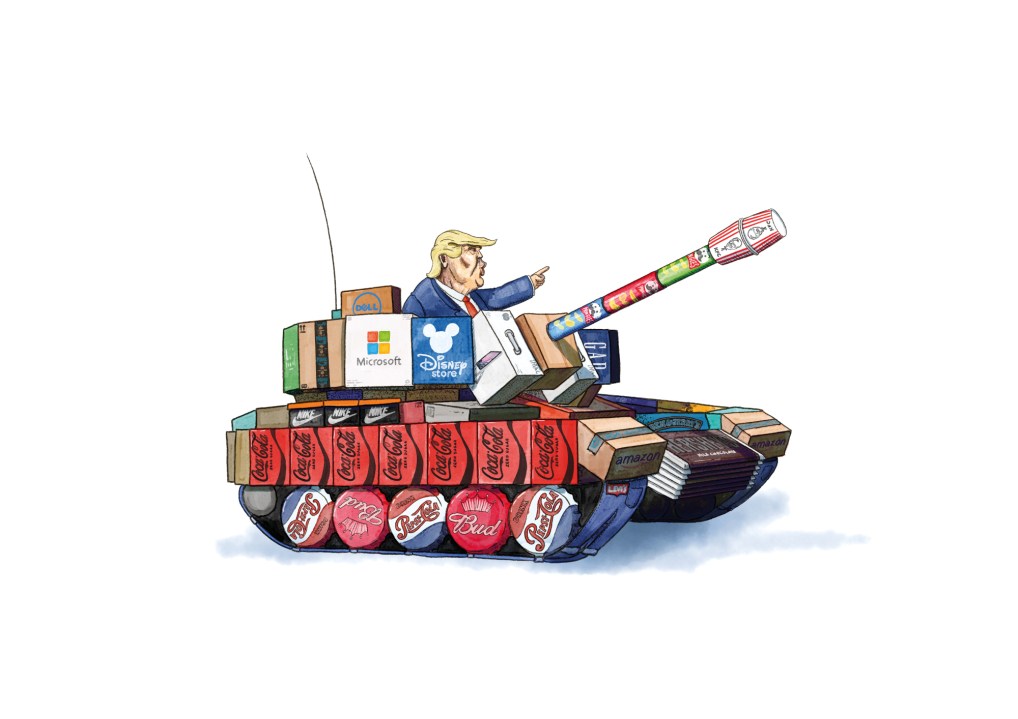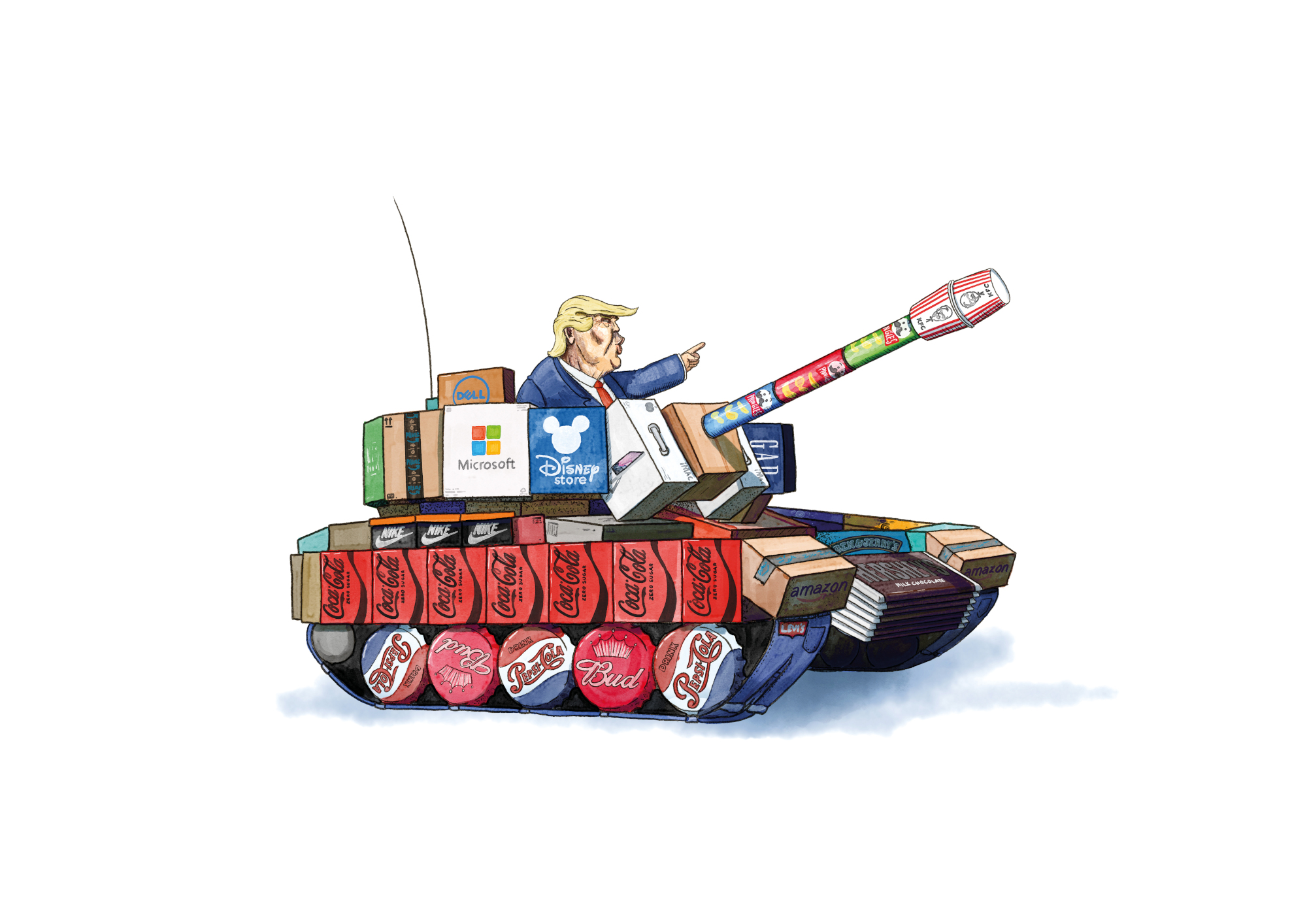Donald Trump’s announcement of huge levies on all the US’s major trading partners has triggered a global stock market meltdown, which may soon be followed by a full-blown recession. Almost no mainstream economist, and certainly none who believes in free markets and free trade, has a good thing to say about Trump’s tariffs.
Yet there is a hidden logic behind the policy. It is not as completely brainless as it might appear. In fact, there are six reasons why the tariffs could make sense.
First, they may well be an effective battering ram for taking down tariff and trade barriers globally. No one seriously disputes that the American market is far more open than most others. The EU has long imposed a 10 per cent tariff on American cars. In the UK, we don’t allow people to buy American chlorinated chicken, even though it is often safer, and cheaper, than domestic poultry. China is closed to Facebook and Netflix. The list goes on and on. It is not, to put it mildly, very fair. American officials have tried to negotiate away those barriers with reasoned argument for a couple of decades without success. Throwing everyone’s toys out of the pram might work better. If the result is a far more global economy, it is worth a few bumps along the way.
Next, the tariffs will rebase the tax system towards consumption. On some estimates the new levies will raise $600 billion a year, although it will be less if Trump negotiates some of them down. One thing almost all economists agree on is that taxing consumption does less damage to the economy than any other way of raising revenue. If the tax system is shifted to imposing taxes on spending money, while leaving savings and investing untouched, that would
be a huge improvement – and would accelerate growth.
Third, the policy will encourage investment in the US. There is a simple way of getting around the tariffs, and one that is a lot better than shifting intellectual property to Ireland and executives to the Bahamas, which is what major multinationals do right now. Simply move your factory from Lyon to Lubbock or from Shenzhen to St Louis. A handful of major businesses, such as Britain’s JCB, or Taiwan’s TSMC, have already started expanding production in the United States and many more will certainly follow over the next few months. President Biden started the reindustrialisation of the American heartlands with his extravagant subsidies for new microchip factories, electric vehicles and green energy suppliers. President Trump is trying to expand that to a far wider range of industries.
Fourth, the levies will reward the skilled working class left behind by globalisation. The professional classes have done well out of the past 30 years, with production shifting offshore – but, as anyone who’s ever listened to a Bruce Springsteen record will know, America’s manual workers have not. Real wages have barely risen, towns have been hollowed out and job security is a distant memory. By protecting these people behind a wall of tariffs, Trump’s plan at least promises some hope of bringing back the glory days of the American working class. They are, after all, his base. If it works, other countries such as the UK or France may well decide to follow its lead. They all have the same problems and have failed to fix them.
Fifth, rebuilding American industry will allow it to compete with China once again. The truth is that you can’t be dependent on a geopolitical adversary for the goods you require to keep society functioning. If supplies of electronics, chemicals, metals, clothes and household goods can all be switched off, at any moment, you are extremely vulnerable to direct military attack and economic blackmail. You are certainly in no position to fight a war, be it hot or cold. Again, Biden started the process off restoring self-sufficiency in microchips and energy. Arguably Trump is just doubling down on that, and restoring it for steel, chemicals and automobiles.
Finally – and this is often overlooked amid the blizzard of criticism – Trump campaigned on a platform of tariffs and won a comfortable election victory. There is something to be said for politicians who deliver on their promises, even if it does not happen terribly often. This is what the voters said they wanted; maybe it is reasonable to respect their wishes, even if it makes the Davos crowd unhappy.
While Trump’s plan remains a deeply flawed one, that does not mean it is completely ridiculous
True, the implementation has been chaotic. It is hard to understand the mathematical equations behind the tariffs, or indeed why they have been applied to some very minor nations. It would certainly have been better to phase in the new levies over a year so that companies had more time to adjust their supply chains. And the tax cuts should have been set out in advance so that there is no hit to demand once the tariffs come into force. Perhaps most of all, the White House badly needs intellectual outriders who can explain what Trump is trying to do. Leaving your opponents to make all the running is seldom a good idea and when global markets are in meltdown it is potentially catastrophic.
While Trump’s plan remains a deeply flawed one, that does not mean it is completely ridiculous, as so many of its critics complacently assume. There is a compelling logic at its core. Globalisation has hollowed out domestic economies and enabled an autocratic, often hostile Chinese ruling elite to accumulate a dangerous amount of power. President Trump is pushing back against that and trying to change the course of history. Who knows? It might even work.








Comments